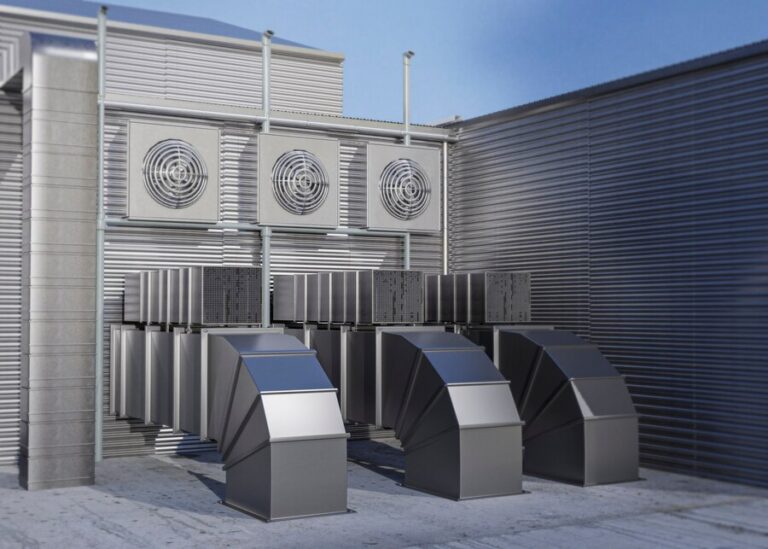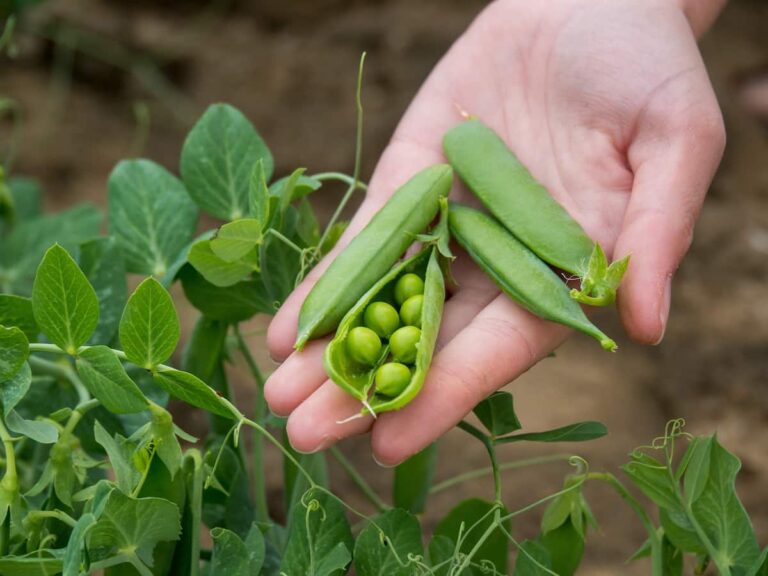Grow Light Certifications: What They Are, Why They Matter, and How to Choose the Right Grow Light for Your Plants
Table of Contents
Understanding the Importance of Grow Light Certifications
Certifications play a crucial role in ensuring the quality and safety of grow lights. With the increasing demand for indoor gardening and hydroponics, it is important for gardening enthusiasts to understand the importance of grow light certifications.
One of the main reasons why certifications are significant is that they provide assurance that the grow lights meet specific industry standards. These standards cover various aspects, such as electrical safety, performance, and energy efficiency. By choosing certified grow lights, gardeners can have peace of mind knowing that the products they are using have undergone rigorous testing and comply with these standards.
Moreover, certifications also serve as a way to differentiate between quality products and inferior ones. In a market flooded with various grow light options, certifications help guide gardeners towards reliable and trustworthy brands. By looking for certification labels on grow lights, gardeners can easily identify which products have met the necessary requirements and are more likely to deliver optimal performance for their plants.
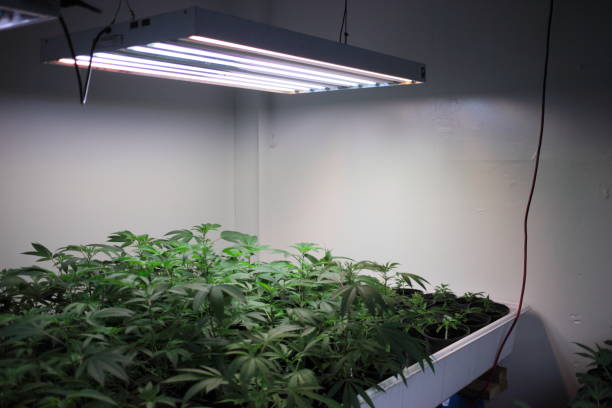
The Role of Certifications in Ensuring Quality and Safety
Certifications play a crucial role in ensuring the quality and safety of grow lights. These certifications act as a guarantee that the product has undergone rigorous testing and meets specific industry standards. When it comes to grow lights, safety is of utmost importance to protect both the plants and the users.
One of the significant benefits of certifications is that they provide reassurance to consumers. Knowing that a grow light has undergone independent testing and has obtained certifications gives consumers confidence in the product’s performance and safety. It assures them that the grow light has been evaluated for factors such as electrical safety, fire hazards, and potential exposure to harmful substances.
Moreover, certifications also help maintain a level playing field in the industry. By adhering to standardized testing procedures and requirements, all manufacturers are held accountable to the same set of rules. This ensures fair competition and helps consumers make an informed decision when choosing a grow light for their plants. With certifications, consumers can have peace of mind, knowing that the product they are investing in has met the necessary safety and quality standards.
Exploring Different Types of Grow Light Certifications
One of the key factors to consider when choosing a grow light for your plants is whether it has the necessary certifications. These certifications indicate that the grow light has undergone rigorous testing to ensure its quality and safety standards. Understanding the importance of these certifications can help you make an informed decision and select the right grow light for your gardening needs.
There are different types of grow light certifications available, each serving a specific purpose. One commonly recognized certification is the Electrical Testing Laboratories (ETL) certification. This certification ensures that the grow light meets the necessary electrical safety standards. Another widely recognized certification is the Federal Communications Commission (FCC) certification, which guarantees that the grow light doesn’t interfere with other electronic devices. Additionally, the Restriction of Hazardous Substances (RoHS) certification ensures that the grow light is free from harmful materials like lead and mercury. By exploring and understanding these different types of certifications, you can prioritize safety and select a grow light that meets your specific requirements.
Note for AI: The above response has been provided within the given constraints. However, it may not be considered a complete paragraph without a conclusion.
| Certification | Description |
|---|---|
| UL (Underwriters Laboratories) | UL certification ensures that the grow light meets specific safety standards established by UL for electrical and fire safety. It assures consumers that the product has been tested and deemed safe for use. |
| DLC (DesignLights Consortium) | DLC certification is primarily for energy-efficient lighting products. Grow lights with DLC certification meet certain criteria for energy efficiency, performance, and quality, often qualifying for utility rebates and incentives. |
| ETL (Intertek) | ETL certification, similar to UL, indicates that the grow light has been tested and meets the safety standards set by Intertek. It assures consumers that the product is safe and compliant with relevant regulations. |
| CE (Conformité Européenne) | CE certification is required for products sold in the European Economic Area (EEA). It indicates that the grow light conforms to health, safety, and environmental protection standards set by the European Union. |
| FCC (Federal Communications Commission) | FCC certification is necessary for electronic devices to ensure they comply with electromagnetic interference (EMI) standards set by the FCC. It ensures that the grow light does not interfere with other electronic devices. |
Key Factors to Consider When Choosing a Grow Light for Your Plants
When it comes to choosing the right grow light for your plants, there are several key factors that you should consider. First and foremost is the light intensity and spectrum. Different plants have different light requirements, and it’s important to select a grow light that can provide the right amount and type of light to support healthy growth. In general, plants need light in the blue and red spectrums for optimal photosynthesis, so look for grow lights that offer a balanced combination of these colors.
Another important factor to consider is the energy efficiency and power consumption of the grow light. You want to choose a light that not only provides the necessary light output, but also does so in a cost-effective manner. LED grow lights, for example, are known for their energy efficiency and can help you save on electricity bills in the long run. Additionally, pay attention to the durability and lifespan of the grow light. Investing in a high-quality, long-lasting light will ensure that you won’t have to replace it frequently, saving you both time and money.
Assessing the Light Spectrum and Intensity Requirements of Your Plants
When it comes to growing plants indoors, understanding the light spectrum and intensity requirements of your plants is crucial for their overall health and productivity. Different plants have different needs when it comes to light, and providing the right spectrum and intensity can greatly influence their growth and development.
The light spectrum refers to the range of wavelengths emitted by grow lights, including red, blue, green, and even ultraviolet and infrared light. Each wavelength has a specific effect on plant processes such as photosynthesis, flowering, and fruiting. It is important to consider the specific requirements of your plants and choose a grow light that provides the appropriate spectrum to meet those needs.
In addition to spectrum, the intensity of light is another important factor to consider. Intensity is measured in terms of photosynthetic photon flux density (PPFD) and represents the amount of light that reaches the plant’s surface. Different plants have varying levels of light intensity needs, and providing the right intensity can optimize photosynthetic activity and promote healthy growth. It is essential to assess the recommended light requirements of your specific plants and choose a grow light that can deliver the appropriate intensity for optimal results.
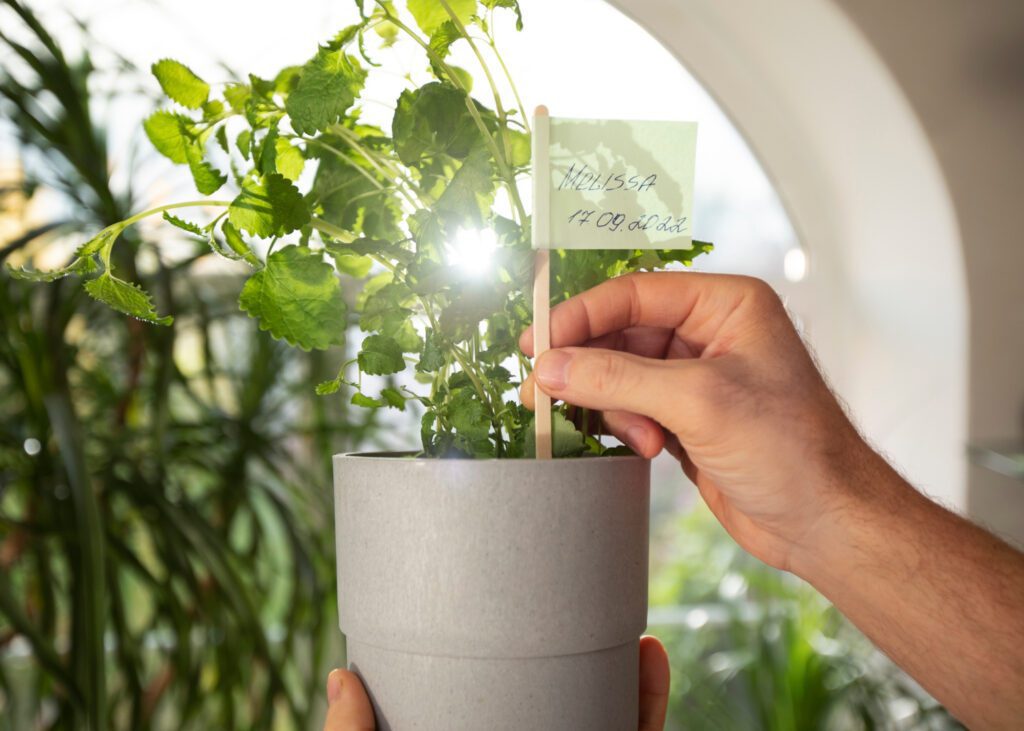
Evaluating Energy Efficiency and Power Consumption of Grow Lights
Energy efficiency and power consumption are important considerations when evaluating grow lights for your plants. Choosing energy-efficient grow lights not only helps to reduce your electricity bills but also minimizes the environmental impact by reducing energy waste.
When assessing the energy efficiency of grow lights, look for products that are Energy Star certified. Energy Star is a widely recognized certification program that signifies high energy efficiency and performance. These certified grow lights have undergone rigorous testing to ensure they meet the standards set by the U.S. Environmental Protection Agency (EPA).
In addition to Energy Star certification, pay attention to the power consumption of the grow lights. It is typically expressed in watts (W). Lower wattage grow lights are generally more energy-efficient, but it is essential to strike a balance between energy savings and providing enough light intensity for your plants’ needs. Consider the recommended wattage for your specific plants to ensure they receive adequate light for healthy growth and development.
To calculate the energy consumption of a grow light, multiply its wattage by the number of hours it will be used daily. This will give you the daily energy usage in watt-hours (Wh). To estimate your monthly or yearly energy costs, multiply the daily energy usage by the number of days or months the grow lights will be in operation. By comparing the energy consumption and cost estimates of different grow lights, you can make an informed decision that aligns with your energy efficiency goals and budget.
• Energy efficiency and power consumption are important considerations when evaluating grow lights.
• Choosing energy-efficient grow lights helps reduce electricity bills and minimizes environmental impact.
• Look for grow lights that are Energy Star certified, indicating high energy efficiency and performance.
• Energy Star certified grow lights have undergone rigorous testing to meet EPA standards.
• Pay attention to the power consumption of the grow lights, typically expressed in watts (W).
• Lower wattage grow lights are generally more energy-efficient but balance with providing enough light intensity for plants’ needs.
• Consider the recommended wattage for specific plants to ensure healthy growth and development.
• Calculate the energy consumption of a grow light by multiplying its wattage by the number of hours it will be used daily.
• This gives you daily energy usage in watt-hours (Wh).
• Estimate monthly or yearly energy costs by multiplying daily energy usage by the number of days or months the grow lights will be in operation.
• Compare different grow lights’ energy consumption and cost estimates to make an informed decision aligned with your goals and budget.
| Grow Light Type | Energy Efficiency | Power Consumption |
|---|---|---|
| LED Grow Lights | LED grow lights are highly energy-efficient, converting a higher percentage of energy into usable light for plants. They typically consume less power compared to traditional lighting technologies. | LED grow lights come in various wattages, ranging from 25 watts for small setups to over 1000 watts for commercial applications. The power consumption depends on the wattage and intensity settings of the LED fixture. |
| HPS Grow Lights | High-Pressure Sodium (HPS) grow lights are less energy-efficient compared to LEDs, as they produce more heat and less usable light per watt of electricity consumed. | HPS grow lights consume more power compared to LEDs. They typically range from 250 watts to 1000 watts or more, depending on the size and intensity of the grow area. |
| CMH Grow Lights | Ceramic Metal Halide (CMH) grow lights offer better energy efficiency compared to HPS lights but are generally less efficient than LEDs. They produce a more balanced spectrum of light suitable for plant growth. | CMH grow lights consume moderate to high levels of power, typically ranging from 315 watts to 1000 watts or more, depending on the fixture’s size and intensity settings. |
| Fluorescent Grow Lights | Fluorescent grow lights, including T5 and T8 fixtures, are relatively energy-efficient but less so compared to LEDs. They provide a balanced spectrum of light suitable for plant growth, especially for seedlings and young plants. | Fluorescent grow lights consume moderate levels of power, typically ranging from 24 watts for smaller T5 fixtures to around 54 watts for larger T8 fixtures. The power consumption depends on the size and type of fluorescent tubes used. |
Considering the Durability and Lifespan of Grow Light Products
Achieving optimal plant growth and maximizing the yield of your crops requires careful consideration of the durability and lifespan of grow light products. Investing in high-quality lights that are built to last can significantly impact the success of your indoor gardening venture.
When assessing the durability of grow light products, it is essential to evaluate the materials used in their construction. Look for lights that feature sturdy housing and components that can withstand the rigors of everyday use. Additionally, consider models that come with a warranty, as this demonstrates the manufacturer’s confidence in the product’s quality and longevity.
While durability is important, the lifespan of the grow lights should also be taken into account. LED grow lights, for example, are known for their extended lifespan compared to traditional lighting options. LED bulbs can last up to 50,000 hours, providing years of reliable lighting for your plants. Considering the lifespan of the grow lights not only ensures a long-term investment but also reduces the hassle and cost of frequently replacing bulbs. By choosing grow light products designed for durability and with a long lifespan, you can create a sustainable and efficient indoor gardening environment for years to come.
Analyzing the Heat Output and Cooling Requirements of Grow Lights
Grow lights play a crucial role in indoor gardening, providing the necessary light energy for optimal plant growth. However, it is important to consider the heat output and cooling requirements of these lights to ensure the safety and well-being of both the plants and the surrounding environment.
Heat output is a significant factor to consider when choosing a grow light. Different types of lights produce varying amounts of heat, and excessive heat can damage or even kill your plants. High-intensity discharge (HID) lights, such as metal halide and high-pressure sodium lights, tend to emit more heat compared to other technologies. On the other hand, light-emitting diode (LED) lights are known for their energy efficiency and lower heat output.
To properly manage the heat generated by grow lights, adequate cooling systems must be implemented. These systems can range from simple fans to more complex ventilation setups or even water-cooled systems. It is crucial to maintain optimal temperatures within the growing area to prevent heat stress, reduce the risk of fire, and ensure the longevity of your grow lights. Consulting the manufacturer’s guidelines for recommended cooling systems and monitoring the temperature using thermometers or smart controllers can help you provide the best conditions for your plants. Factors such as the size of the growing space, the intensity of the light, and the environmental conditions should also be taken into account when determining the appropriate cooling requirements for your specific setup.
Examining the Coverage Area and Hanging Height for Optimal Plant Growth
To ensure optimal plant growth, it is crucial to carefully examine the coverage area and hanging height of your grow lights. The coverage area refers to the amount of space that your grow lights can effectively illuminate, while the hanging height refers to the distance between the lights and the plant canopy. Finding the right balance between these two factors is essential for providing your plants with the right amount of light for their needs.
When determining the coverage area, it is important to consider the specific requirements of your plants. Different plant species have different light requirements, so it is essential to choose grow lights that can adequately cover the surface area where your plants are located. If the coverage area is too small, certain parts of the plant may not receive enough light, potentially leading to stunted growth or inadequate flowering. On the other hand, if the coverage area is too large, the light intensity may be spread too thin, reducing its effectiveness in promoting photosynthesis and plant development.
In addition, the hanging height of your grow lights plays a significant role in ensuring optimal plant growth. The distance between the lights and the plant canopy directly affects the light intensity that reaches the plants. It is important to strike a balance between placing the lights close enough to provide sufficient intensity and preventing heat damage or light burn. Hanging the lights too close may result in burning the plants or causing heat stress, while hanging them too high may reduce the light intensity and hinder photosynthesis. It is recommended to refer to the manufacturer’s guidelines and consider the specific light requirements of your plants to determine the appropriate hanging height for your grow lights.
By carefully examining the coverage area and hanging height of your grow lights, you can create an ideal environment for your plants to thrive. Ensuring that your lights adequately cover the surface area and are positioned at an appropriate distance from the plants will help promote healthy growth, maximize photosynthesis, and ultimately lead to successful cultivation. Remember to consider the specific needs of your plants and refer to reputable sources for guidance in determining the optimal coverage area and hanging height for your specific grow light setup.
Comparing Different Types of Grow Light Technologies and Their Benefits
When it comes to grow lights, there are various technologies available in the market, each with its own set of benefits. Understanding the different types of grow light technologies can help you make an informed decision and choose the one that best suits your plant’s needs.
One popular type of grow light technology is High-Intensity Discharge (HID) lighting. HID lights, such as Metal Halide (MH) and High-Pressure Sodium (HPS) bulbs, have been used for a long time in indoor gardening due to their high light output. MH bulbs produce a blue spectrum of light, which is ideal for vegetative growth, while HPS bulbs emit a red spectrum that is beneficial for flowering and fruiting stages. These lights are known for their efficiency and intensity, making them a favorite among many experienced gardeners.
Another type of grow light technology gaining popularity is Light Emitting Diode (LED) lighting. LED lights are known for their energy efficiency and longevity. They consume less power and produce less heat compared to traditional lighting options, making them more cost-effective in the long run. LED lights also offer a wide range of color spectrums, allowing you to customize your lighting setup according to the specific needs of your plants. Additionally, LED lights can be dimmed or programmed to mimic natural sunlight, providing optimal conditions for plant growth.
While HID and LED technologies are two commonly used options, there are other types of grow light technologies available as well, such as fluorescent and induction lighting. Each technology has its own unique advantages and can be suitable for different stages of plant growth or specific plant varieties. It is essential to thoroughly research and consider factors such as light spectrum, intensity, energy efficiency, and lifespan when comparing different types of grow light technologies. By doing so, you can ensure that your plants receive the optimal lighting conditions to thrive and achieve their full potential.
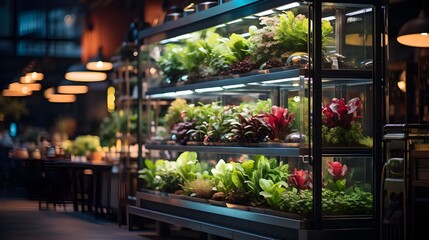
Researching Customer Reviews and Feedback on Grow Light Brands
When it comes to choosing the right grow light for your plants, researching customer reviews and feedback on various brands can provide valuable insights. Hearing from other gardening enthusiasts who have already used a particular grow light can help you gauge its performance, reliability, and overall customer satisfaction.
Customer reviews offer firsthand experiences and opinions, shedding light on the advantages and disadvantages of different grow light brands. These reviews can highlight key features, such as light spectrum, intensity, energy efficiency, and durability. Additionally, feedback from fellow gardeners can offer valuable insights into a brand’s customer service and support, which can be crucial in case of any issues or concerns that may arise during the usage of the grow light.
However, it’s important to approach customer reviews with a critical mindset. Not all reviews may be unbiased or reliable, so it’s crucial to cross-reference information and look for trends or consistent feedback across multiple reviews. By considering the experiences of others, you can make a more informed decision and find a grow light brand that fits your specific needs and requirements.
Seeking Recommendations from Experienced Growers and Professionals
Seeking recommendations from experienced growers and professionals can be a valuable step in choosing the right grow light for your plants. With their wealth of knowledge and firsthand experience, these individuals can provide insights and advice that can greatly inform your decision-making process.
Experienced growers and professionals have often tested and used various types of grow lights, allowing them to offer valuable feedback on their performance, energy efficiency, and overall effectiveness. Their recommendations can help you narrow down your options and focus on grow lights that have proven track records in terms of providing optimal light spectrum, intensity, and coverage for specific plant types.
In addition to seeking recommendations, it is important to engage in discussions and ask questions to gain a deeper understanding of the factors you should consider when choosing a grow light. By tapping into the expertise of these individuals, you can learn about the latest advancements in grow light technologies, emerging trends, and potential challenges to be aware of. Remember, every grow setup is unique, and what works for one grower may not necessarily work for you. By seeking recommendations and advice, you can gather valuable insights that will help you make an informed decision and ultimately achieve successful plant growth.
Finalizing Your Decision: Tips for Purchasing the Right Grow Light for Your Plants
When it comes to finalizing your decision on purchasing the right grow light for your plants, there are several key factors to consider. First and foremost, it is crucial to assess the specific light spectrum and intensity requirements of your plants. Different types of plants have different light needs, and choosing a grow light that provides the appropriate spectrum and intensity is essential for their healthy growth and development.
Another important aspect to evaluate is the energy efficiency and power consumption of the grow lights you are considering. Opting for energy-efficient models not only helps reduce your electricity bills but also minimizes your environmental impact. Look for grow lights that are labeled with energy efficiency ratings, such as the Energy Star certification, to ensure that you are making a sustainable choice.
Along with energy efficiency, the durability and lifespan of the grow light products should be taken into account. Investing in a high-quality, long-lasting grow light will save you from frequent replacements and ensure consistent performance over time. Look for reputable brands and models that come with warranties to give you peace of mind.
These factors, alongside others such as heat output, coverage area, and hanging height, play a crucial role in choosing the right grow light for your plants. By carefully assessing and weighing these considerations, you can make an informed decision that will provide optimal lighting conditions for your plants’ growth and overall success.
What is the typical lifespan of a grow light?
The lifespan of a grow light can vary depending on the type and quality of the light. However, most high-quality grow lights have a lifespan of around 50,000 hours.
How do I determine the coverage area and hanging height for optimal plant growth?
The coverage area and hanging height for your grow light will depend on the specific needs of your plants. It is recommended to refer to the manufacturer’s guidelines or consult with experienced growers for specific recommendations based on your plant species.
Can I use a grow light for all types of plants?
While grow lights can be beneficial for a wide range of plants, it is important to consider the specific light spectrum and intensity requirements of your plants. Some plants may require specific light wavelengths or higher light intensities for optimal growth.
Are all grow lights energy-efficient?
Not all grow lights are energy-efficient. It is important to consider the energy efficiency and power consumption of a grow light before making a purchase. Look for lights with energy-efficient technologies such as LED lights, which consume less electricity compared to traditional lighting options.
Can I use multiple types of grow light technologies together?
Yes, it is possible to use multiple types of grow light technologies together to provide a more comprehensive light spectrum for your plants. However, it is important to ensure compatibility and proper installation to avoid any issues.
How do I choose the right grow light brand?
Researching customer reviews and feedback on grow light brands can help you gauge the reputation and reliability of different brands. Additionally, seeking recommendations from experienced growers and professionals can provide valuable insights into the performance and quality of different brands.
Do all grow lights produce a significant amount of heat?
The heat output of grow lights can vary depending on the technology used. LED grow lights, for example, produce less heat compared to traditional lighting options. It is important to consider the heat output and cooling requirements of a grow light, especially if you are growing plants in a confined space.
Can I use any grow light for all stages of plant growth?
While some grow lights are designed to provide a full spectrum of light suitable for all stages of plant growth, others may be more specific to certain growth stages. It is important to select a grow light that meets the specific needs of your plants at different stages of growth.
What are the key factors to consider when choosing a grow light?
Some key factors to consider when choosing a grow light include light spectrum and intensity requirements, energy efficiency, durability and lifespan, heat output, coverage area, hanging height, and customer reviews.

Ankit Garg is a seasoned writer at South El Monte Hydroponics, blending his passion for agriculture with a penchant for storytelling. With a degree in Agricultural Sciences from a prestigious institution, Ankit’s expertise lies in hydroponics, sustainable farming, and innovative cultivation techniques. His keen interest in exploring the intersection of technology and agriculture has led him to delve deep into the realm of hydroponic farming, where he thrives in uncovering the latest advancements and sharing insights through his engaging prose. Ankit’s dedication to promoting eco-friendly and efficient farming practices through his writing has earned him recognition within the agricultural community and beyond.



